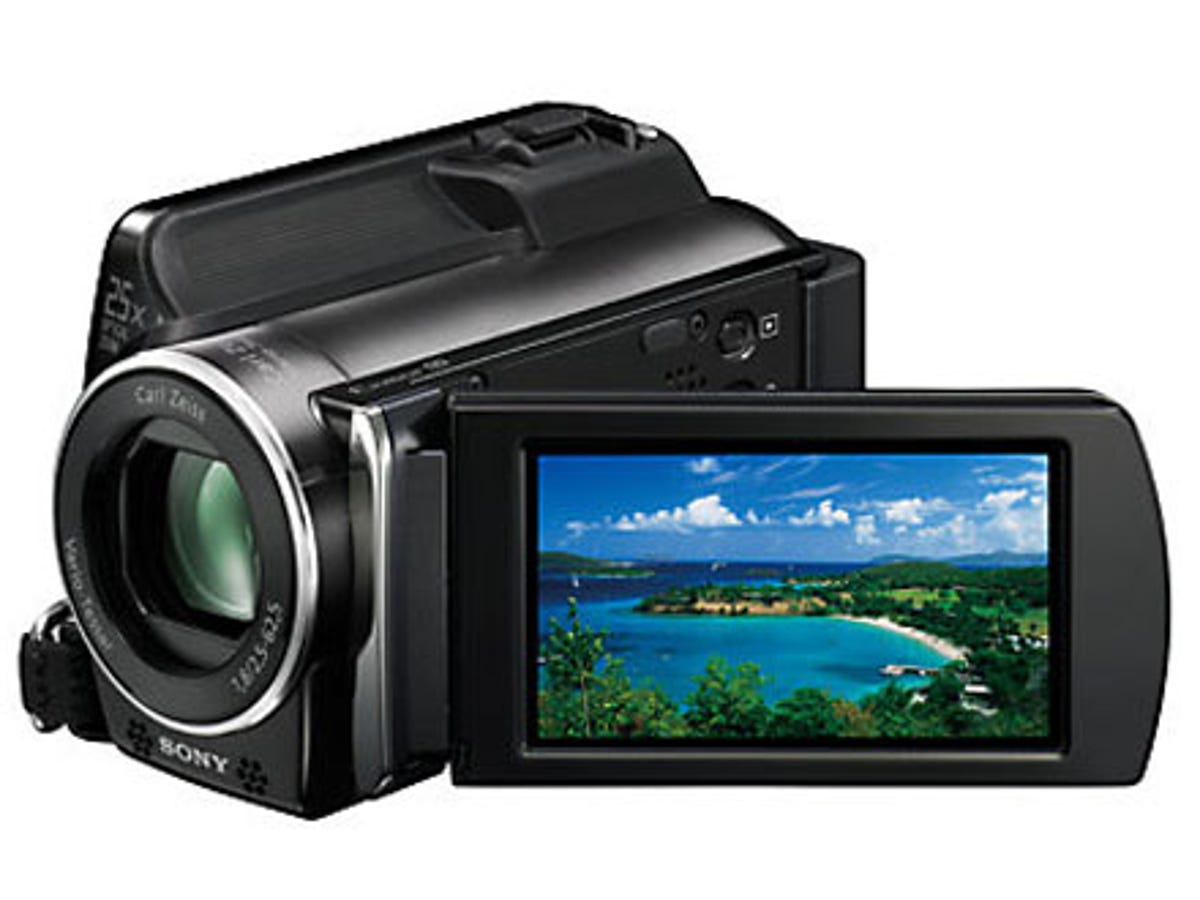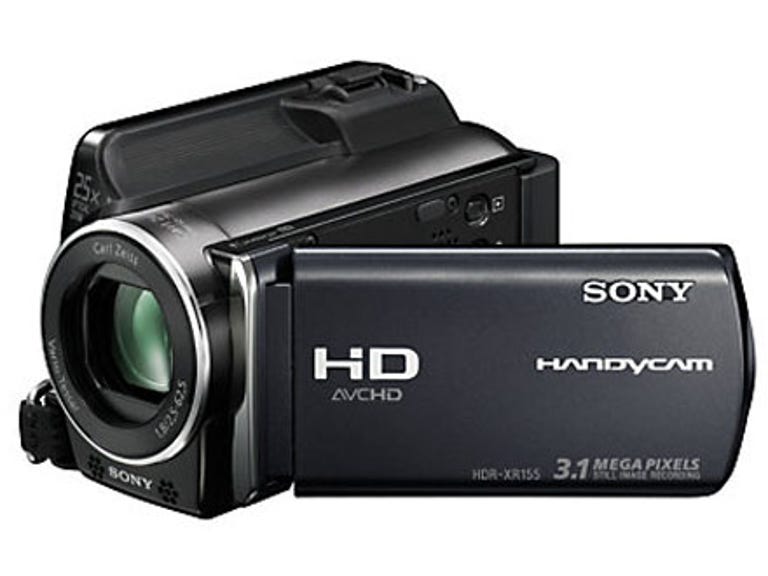 Why You Can Trust CNET
Why You Can Trust CNET Sony Handycam HDR-XR155E review: Sony Handycam HDR-XR155E
With great picture quality and a healthy amount of on-board storage for a reasonable price, the Sony Handycam HDR-XR155E is a smart choice for anyone planning to use their camcorder often. Don't expect great results on the photo side, though.
A small, mid-range camcorder married to a large built-in hard disk, the Sony Handycam HDR-XR155E offers convenience, quality and enough storage to record the equivalent of more than 6 months' worth of Eastenders in high definition. Whether or not you actually need that much built-in memory is another matter. But, at £430, the XR155E certainly has the potential to offer an attractive blend of features, quality and value.
The Good
The Bad
The Bottom Line
Vision express
Leaving the storage aspect to one side for a moment, the XR155E is kitted out with a whole host of Sony's latest camcorder tech, including a 1/4-inch Exmor R CMOS sensor and 1080i high-definition video-recording at 50 frames per second, with a top bit rate of 24Mbps. In practice, this translates into a sharp, accurate picture that's rich in colour and high in detail. In our tests, we were particularly impressed by the way the Handycam handled motion. Many AVCHD digital camcorders can suffer from pixelling with fast camera movements, but the XR155E manages to resist this, even in fairly brisk panning shots, thanks, presumably, to a combination of its high bit rate and fast Bionz image processor.
Picture quality often plummets on camcorders as soon as you start filming indoors, but this isn't necessarily the case with the XR155E. Auto functions can sometimes struggle a little with artificial light sources, resulting in a slightly greenish cast under fluorescent strip lights and an overly orange hue in rooms lit by incandescent bulbs. But, by and large, the Handycam manages to stay grain-free in all but the most dingy environments, which is pretty admirable.

Connectivity is well catered for, too. Recordings can be played back directly from the camcorder by plugging it into an HDMI socket on an HD Ready TV or via a basic AV cable to ye olde standard-def telly. USB is also available for PC or direct-to-disk transfers.
Balancing act
The XR155E strikes a fairly good balance between ease of use and features. By default, the device is skewed towards inexperienced users. Many of its features, such as 'intelligent auto' and face detection, are aimed at helping those who just want to get on with filming achieve the best possible results. In saying that, it's also possible to play about with many manual settings, should you so wish. The camera's menus work on a two-tier system, with the initial 'my menu' screen offering instant access to a customisable selection of up to six settings. Those who want to probe further can then head to the full menu for more.
Apart from video/photo/playback mode switches and a handful of other hard buttons, most of the XR155E's functions are controlled using Sony's current touchscreen user interface. If you haven't used anything similar before, it can be slightly irritating at first, but it's by no means the worst touch system we've encountered. The 2.7-inch fold-out LCD is just about large and responsive enough to allow for comfortable finger control.
A long, 25x optical zoom is provided to help you get up close and personal with distant subjects. Sony provides a version of its SteadyShot feature to counteract wobble and shake, but we found it to be slightly less effective than the optical image stabilisers found on some of the Handycam's rivals.
Photo quality is mildly disappointing. Top resolution is 3.1 megapixels and results are something of a mixed bag, with shots noticeably lacking in detail and definition compared to those from a modestly priced compact camera. We weren't that keen on the 'smile shutter' feature, either, which is supposed to recognise when people are smiling and automatically save still shots while you're filming. In reality, all it did was fill up our photo folder with a rogues gallery of somewhat unflattering grimaces.
HDD or not HDD?
There are only a handful of throwback camcorders that store to tape or DVD these days, so the only real choice to make is whether you go for one that uses a hard disk or one that records to memory. It's a tricky choice -- one that's thrown into sharp relief by the fact that, aside from its 120GB of built-in hard disk, the XR155E is technically very similar to Sony's HDR-CX115E, which is much cheaper (£350) but comes with no built-in storage and requires removable memory cards to record on.
On the one hand, you could argue that the XR155E offers better value, since you'd need fifteen 8GB memory cards for the CX115E in order to achieve the equivalent amount of storage space. Even with cheap SD cards bought online, this is likely to set you back an additional £150. On the other hand, it's fairly unlikely you'd ever need to use up all 120GB of storage in one sitting. Since memory is reusable, it would be perfectly possible to save money by working with a couple of smaller memory cards and adding more memory as and when you need it.
The other aspects to consider here are weight and comfort. The CX115E is very small and light. In comparison, the XR155E's hard disk makes it significantly heavier, and its overbalanced body isn't entirely comfortable to hold for long periods. This is a small point, though, and one that many people may be willing to overlook for the convenience the built-in storage provides. Another small niggle is the lens cover, which is of the manual variety and requires you to remember to open and shut it yourself, rather than magically doing so all by itself.
Conclusion
Barring a couple of minor points, we would happily recommend the Sony Handycam HDR-XR155E. It's compact, crammed full of useful features and, above all, remarkably easy to achieve great results with. Whether you opt for this over a memory-card-only model depends on personal preference. Unless you hoard your old clips on the camcorder rather than transferring them to a PC or DVD, you'll probably never fulfill the XR155E's storage capacity. If you do, there's a dual SD/Memory Stick card slot for you to add even more space.
Edited by Emma Bayly


